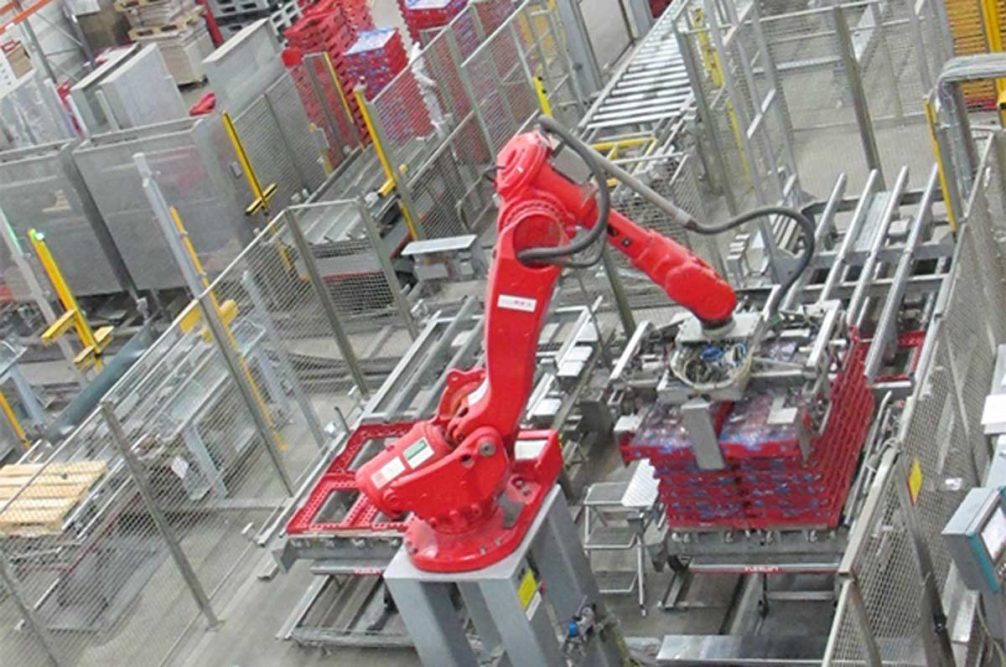When it comes to high-speed lines, remote monitoring by outside vendors can reduce potential downtime or fine-tune efficiency by allowing outside vendors to have remote access to the equipment inside a bakery.
All too often, however, firewalls and other IT security measures prevent this from happening because plants are so concerned about a virus infecting their networks and either compromising proprietary information or even shutting an entire operation down.
“It’s a very real issue and often caused by an outside vendor working on a piece of equipment and that laptop they bring in launches a virus into the network, which has happened multiple times in bakeries,” said Dave Watson, baking and snack subject matter expert, The Austin. Co., in a recent interview with Baking & Snack magazine.
“Many vendors would like to access bakeries from remote sites, but they have to first convince IT departments that it’s not creating a risk to the plant networks,” he added.
Mr. Watson noted that many baking companies today now create networks that separate their office and administration departments from their plant operations.
“That’s because a lot of times they were getting viruses that started in the office environment and spread across the network and into the plant, creating a huge risk for data being stolen from the site,” Mr. Watson explained. “It’s getting better, but IT departments from the major bakeries have very strict rules on who they allow in and how they allow them into the plant’s network.
With the pandemic restricting outsiders from entering facilities, many bakeries are looking at secure ways to allow remote access from select vendors to the production floor without compromising on security.
“IT has gotten better in dealing with remote access for monitoring equipment,” Mr. Watson said. “There are big energy companies offering ways to monitor energy usage in your plant and create algorithms to better manage your usage. Several companies have developed ways to penetrate their firewalls in a safe way so that critical points can be remotely monitored and reports created to better manage the capabilities at the site.”
Clay Miller, president of Burford Corp., a Middleby Bakery company, suggested that remote access to bakeries is becoming more of a reality. During the past year, he noted, Burford and other vendors increased an investment in the latest advances in digital technology that allows for more effective, affordable and secure remote maintenance of equipment.
“It’s here to stay,” Mr. Miller said during an engineering roundtable at the American Society of Baking’s virtual BakingTech 2021 conference. “You cannot replace the person who is doing the training in person completely, but to not have the wasted time of travel and the expense of travel and get things up and running in a bakery quickly is something that’s definitely not going away.”
Gaining remote access all depends on the bakery. Some companies are more open to allowing outside monitoring than others.
“The technology is only as good as the internet connection that you have inside the bakery,” Mr. Miller observed.
Many times, it comes down to working out the details that ensures a secure connection between a bakery and select suppliers, noted Jeremiah Tilghman, general manager, Canyon Bakehouse, which is owned and operated by Flowers Foods, Thomasville, Ga.
In some cases, he said, bakeries may consider allocating savings from not traveling to IT, infrastructure and virtual training that could reduce overhead and enhance operating efficiencies in the long run.
[Related reading: Make sure IoT becomes A-OK for a bakery]
“We have had some audits that are completely 100% virtual with iPads, and there’s just going to be more of that, but you need to have the right infrastructure and bandwidth, the right firewalls and connections,” Mr. Tilghman said during BakingTech.
Engineering panelist Chris Gizzi, senior application specialist at Puratos Corp., also described remote access to bakeries as an evolution that’s going to continue forward.
“We’re really at the advent of this type of remote support, but at the end of the day, we’re always here,” he said. “Just because we’re not on site, please don’t be afraid to reach out. We’ll find the means to connect with you remotely.”
During BakingTech, Rowdy Brixey, president, Brixey Engineering, recommended that bakers should explore how new technologies are being implemented by different manufacturing companies.
“I’m always amazed how sometimes we try to solve a problem by coming up with something completely unique when other industries have come up with a format that’s pretty simple and pretty robust,” he noted.
He added that many of these options are as simple.
“OEMs need to start building a library of on-demand videos that are very short, very simple and straight to the point,” Mr. Rowdy said. “How to install the augers. How to replace the vacuum seal. How to clean the nozzle. How to adjust the pressure. How to replace the pump seal.”
Bakers and equipment vendors, he added, should rely on their equipment suppliers to develop this video library based on their actual experiences while working out in the field.
“What are some of the common problems or things you come in to fix, correct or adjust that they could have done on their own?” Mr. Brixey asked. “And break those videos down into something that we could just pull up on our phone. Typically, everyone has access to a connection when they’re within the plant.”
But he also said there are other, easily available options.
“Have something that I can easily view on a laptop, an iPad or a cell phone and quickly search for it,” Mr. Brixey added. “Hopefully, we’ll see more of that ahead to help people solve their problems.”
This article is an excerpt from the March 2021 issue of Baking & Snack. To read the entire feature on IoT and Maintenance, click here.






